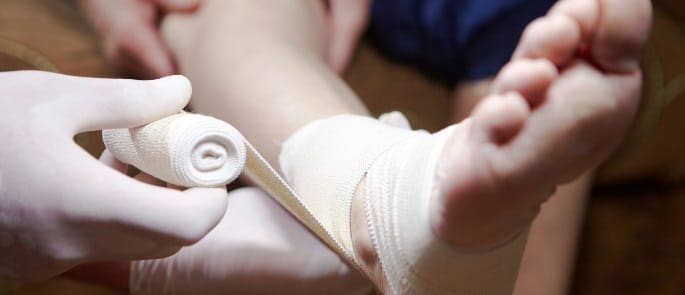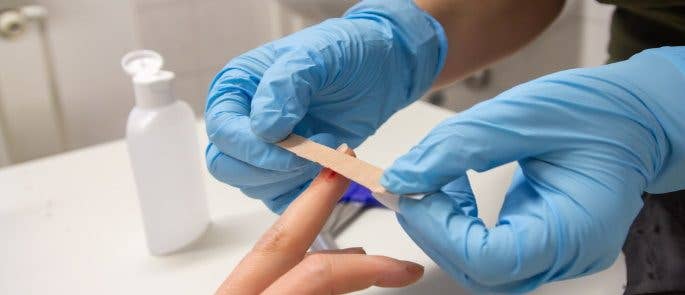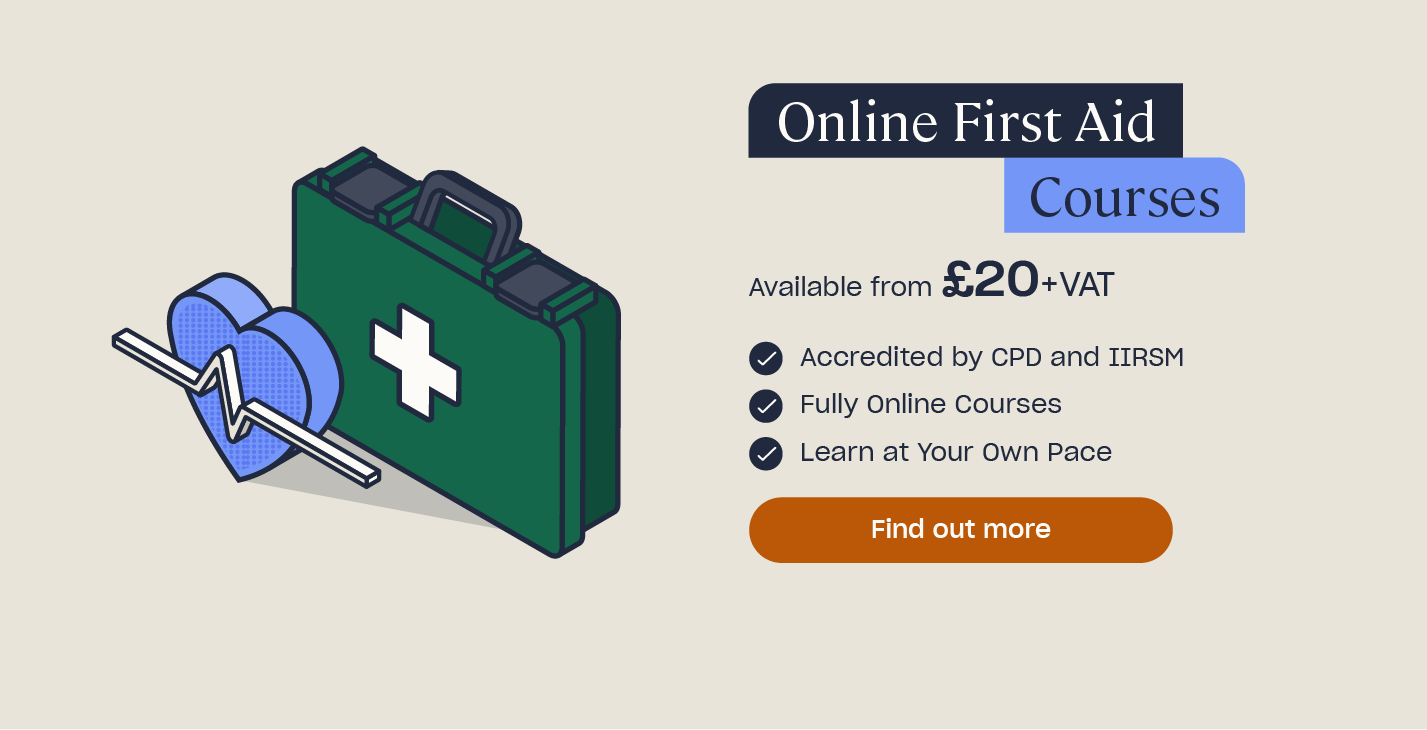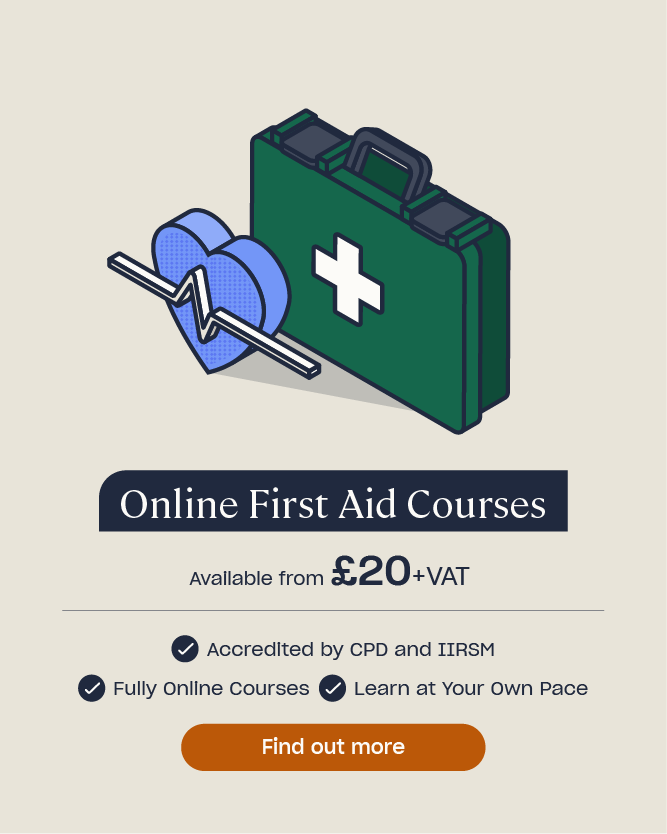How Many First Aiders Do I Need In My Workplace?
Having first aid measures in place to deal with potential accidents and incidents at work is an incredibly vital part of your health and safety procedure. Hopefully, these some of these skills won’t need to be put into use, but it is essential that first aiders are ready to act in case of either minor injury or emergency. First aid regulations can be complicated, however, and it may be that you aren’t sure if you have the necessary cover in place.
Looking to Learn More?
Our Workplace First Aid and Paediatric First Aid Training are suitable for staff members who wish to learn new first aid skills and gain an awareness. We also offer First Aid at Work (FAW) Refresher and Emergency First Aid at Work (EFAW) Refresher which are intended for qualified first aiders who need to maintain their existing first aid skills.
How Many First Aiders Are Required By Law?
By law (the Health and Safety (First-Aid) Regulations 1981), employers must make sure they provide adequate and appropriate first aid equipment, facilities, and personnel in the workplace. However, what is adequate and appropriate is quite vague and it can be difficult to know how to ensure you are legally compliant. Therefore, in order to ensure you do have the adequate number of first aiders in your organisation, you should carry out a first aid needs assessment.

How to Carry Out a First Aid Needs Assessment
Carrying out a first aid needs assessment may seem a daunting challenge but it really doesn’t need to be. The purpose of a first aid needs assessment is to ensure there are suitable provisions in place in case of an accident or incident. While it isn’t a legal requirement for the first aid needs assessment to be written down or formal, keeping a written record is recommended. As an employer, you can use this assessment to demonstrate to an HSE or local authority inspector how you decided what level of first aid provision is required.
When carry out a first aid needs assessment, consider the following points:
- What type of work is carried out?
- Does the workplace have low or high level hazards?
- Has there been a history of accidents at the workplace?
- Do you have any lone workers?
- How big is your workforce?
- Does your workforce stay onsite or work remotely?
- Are your workers in full time or part time jobs?
- What is the nature of the workforce? E.g. young workers, employees with disabilities or particular health problems, or trainees.
- Is your workplace within easy distance and access for the emergency services?
- Do you have a large number of visitors to the workplace?
When carrying out your first aid needs assessment, remember to take into account the practicalities of day to day work. For example, if you decide you only need one first aider, what do you do if that person goes off sick or is on holiday? Do you have someone in their place that is trained to the same level? Think about whether people regularly visit your workplace. If you work in an organisation that has a lot of visitors onsite, then it is advised that you are able to treat them should a situation arise.
High hazard workplaces, such as construction sites with dangerous machinery, will likely require qualified first-aiders who have completed additional training for first aiders to respond to injuries resulting from special hazards. Having carried out a first aid needs assessment of your workplace, you will be able to determine what level of provision is required.
Looking to Learn More?
Our article on How to Conduct a First Aid Needs Assessment provides a free downloadable template that you can use in your workplace.
Note, however, that the HSE no longer approve courses themselves. If qualified first aider are needed, you should ensure they take appropriate training. The means of assessment should include a practical assessment and, at the end of the training, participants should gain a certificate in First Aid at Work (FAW) or Emergency First Aid at Work (EFAW). To remain a qualified first aider, they must take FAW or EFAW requalification practical training every three years. It also recommended that they keep their skills up to date by taking refresher training every year. We offer both First Aid at Work (FAW) Refresher and Emergency First Aid at Work (EFAW) Refresher training.

How Many First Aiders Do I Need In My Workplace?
Having carried out a first aid needs assessment, you are now in a place to understand how many first aiders are required in your workplace. As was explained earlier, there is not a legal set number of first aiders that you need at work.
Low-Risk Workplaces
The HSE recommends that if work activities are low level hazard (e.g. office or shops) and there’s fewer than 25 employees, only one appointed person as a minimum may be suitable and a first-aider may not be required at all. If the number of employees in this scenario increases to between 25 and 50, then at least one EFAW first aider is needed. If more than 50 people are employed, then at least one first aider trained in FAW for every 100 employed is needed.
High-Risk Workplaces
If a workplace has higher level hazards present (e.g. food processing or chemical manufacture), then at least one appointed person is required if there are fewer than five employees. For 5 to 50, at least one first aider trained in FAW or EFAW (depending on the type of injuries that may be sustained) is suggested. When the number of employees exceeds 50, at least one first aider trained in FAW for every 50 employed.
Hybrid Working
Over recent years, it’s become more common for people to split their working hours between the traditional workplace and their homes, perhaps working three days in the workplace and two days from their home office. The need for first aiders in the workplace hasn’t changed, however, and it’s vital that you still have an adequate and appropriate number of trained people on-site whenever people are working there. Ideally, there should be at least one appointed person available in the workplace at all times. If the usual first aider is working from home, then a replacement first aider should be appropriately trained to cover the workplace whilst they are away.
A hybrid working policy should include details of who the appointed first aiders are and how their presence in the workplace will be managed so that there’s always a qualified first aider on-site. This may require more employees to be trained in first aid to ensure there are enough people to enable coverage on all days of the week. Bear in mind that the more employees present on-site, the more trained first aiders you will need, as detailed above.

Do I Need an Appointed Person?
If your first aid needs assessment shows that you do not need any first aiders, then you must have an appointed person as a minimum. This person is in charge of first aid arrangements, such as calling the emergency services when required and maintaining first aid equipment. They do not need to have undertaken first aid training, though an awareness level is advised.
An appointed person may also take charge of arrangements if there is only one first aider and they are absent due to unforeseen circumstances, e.g. sickness. However, if there are an adequate number of qualified first aiders, an appointed person is not necessary.
In this article, you’ve learnt how many first aiders you need in the workplace, whether you work in a small office, large worksite or practise hybrid working. We hope you’ve found the information useful.
Further Resources:
- Workplace First Aid Quiz
- Guidance for First Aid Kits in the Workplace
- Workplace Health & Safety Quiz
- HR Guide to Health & Safety – PDF Template
- First Aid Qualifications: The Difference Between FAW and EFAW
- What are the Responsibilities of a First Aider?
- Online Workplace First Aid Training







